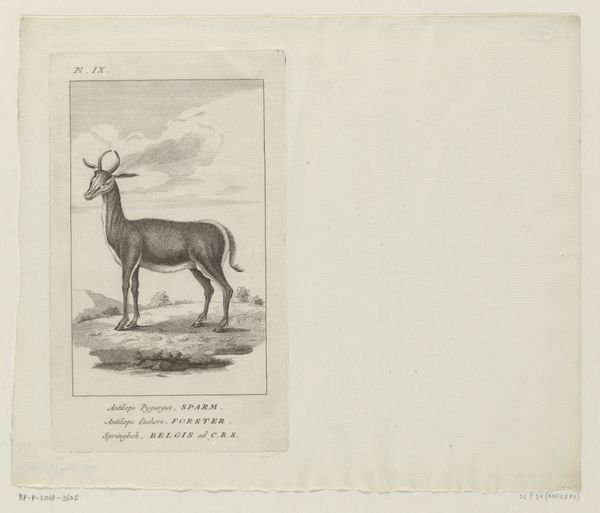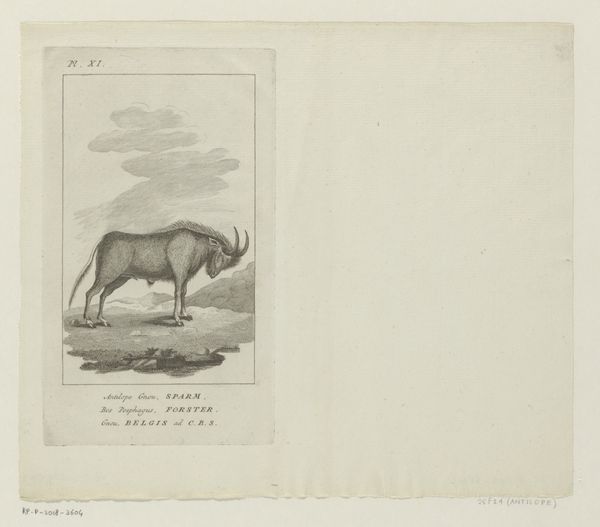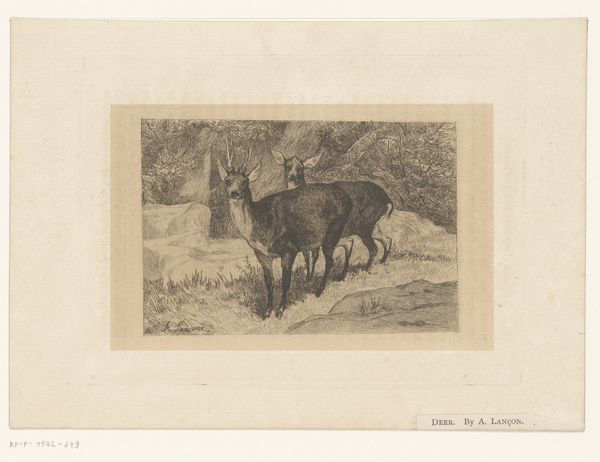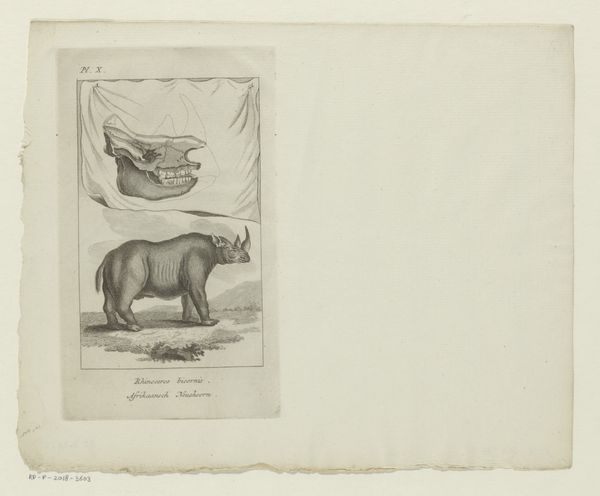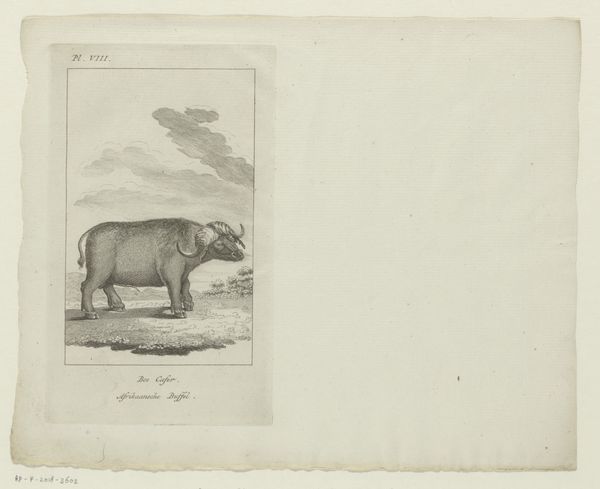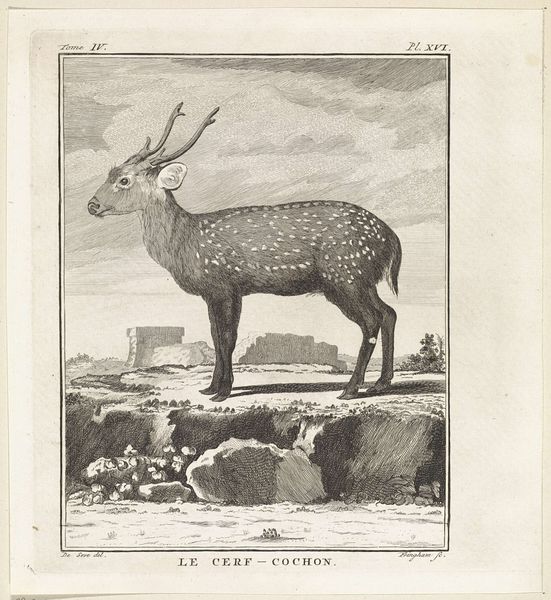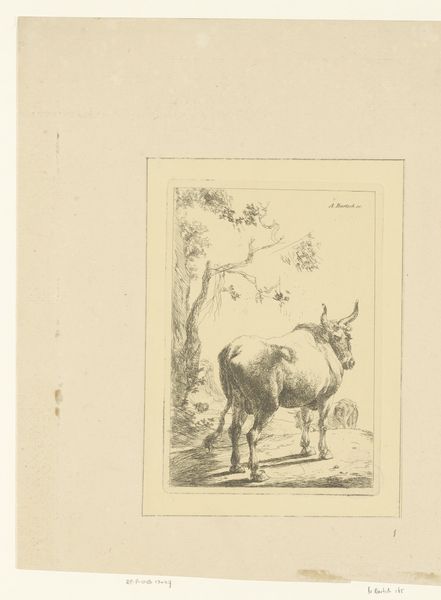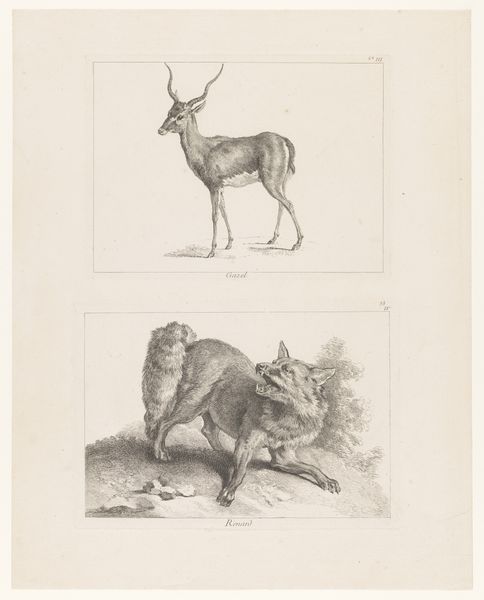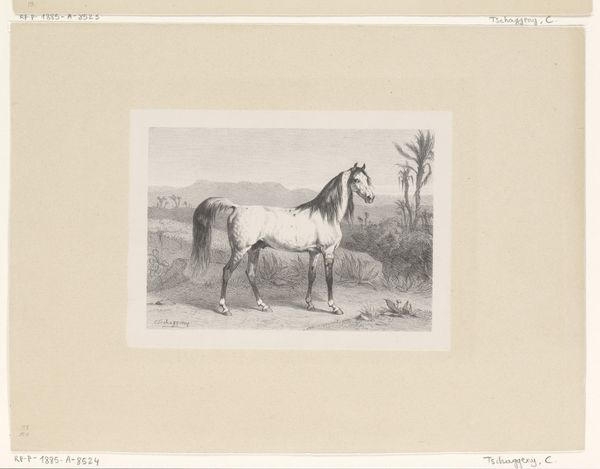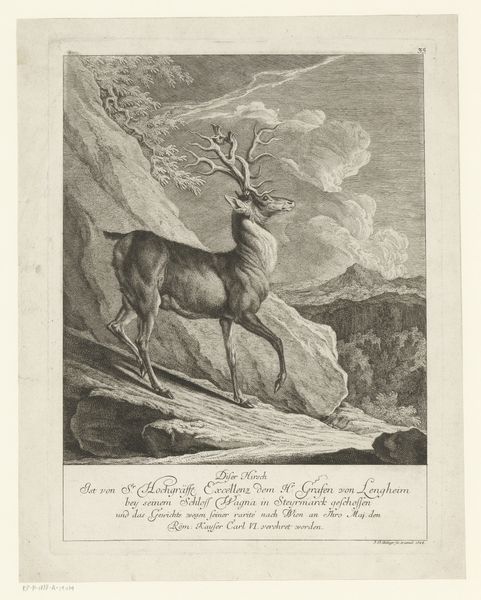
print, engraving
#
animal
# print
#
landscape
#
engraving
#
realism
Dimensions: height 203 mm, width 113 mm
Copyright: Rijks Museum: Open Domain
Editor: Here we have "Elandantilope," an engraving from 1787. It presents a single antelope in a sparse landscape. The overall tone feels very formal and scientific, almost like a specimen record. What strikes you about it? Curator: Well, this print reflects the period's intense interest in classifying the natural world, driven by colonial expansion and the Enlightenment's scientific aspirations. It's not simply an image of an animal, but an assertion of control – naming, categorizing, possessing, in a way. Editor: That makes a lot of sense. The way the animal is presented so starkly does feel like it’s being displayed for observation. Did these kinds of images play a particular role back then? Curator: Absolutely. These engravings, distributed widely through books and scientific publications, were vital in shaping public understanding – or misunderstanding – of faraway lands and their inhabitants, both animal and human. How do you think this image would influence someone’s perception of Africa, who had never been there? Editor: I guess it would depend on whether people understood the context. Without any local narrative or perspective, they might assume this isolated image is a comprehensive picture. It seems like a potentially powerful, but also limited, form of representation. Curator: Exactly! And it’s through those limitations, those imposed structures, that we can understand the power dynamics at play. It raises questions about who gets to represent whom and for what purpose. Editor: This engraving tells us more than what first meets the eye. I’m now considering how this seemingly straightforward animal image also functions as a historical and cultural artifact, shaped by specific forces and wielding its own influence. Thanks for shedding some light on this! Curator: My pleasure. It’s by considering art as an active participant in historical processes, rather than a passive reflection of them, that we gain richer insights.
Comments
No comments
Be the first to comment and join the conversation on the ultimate creative platform.
